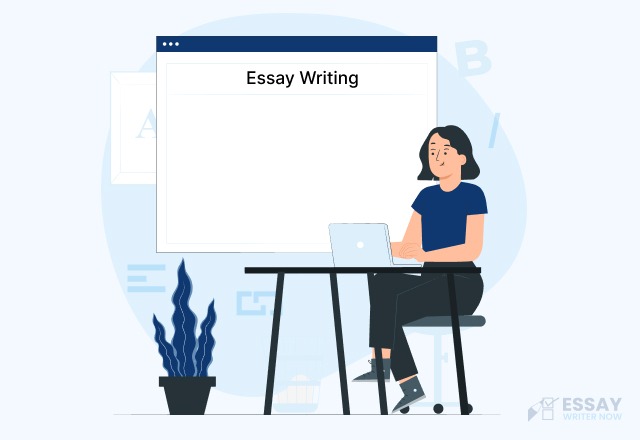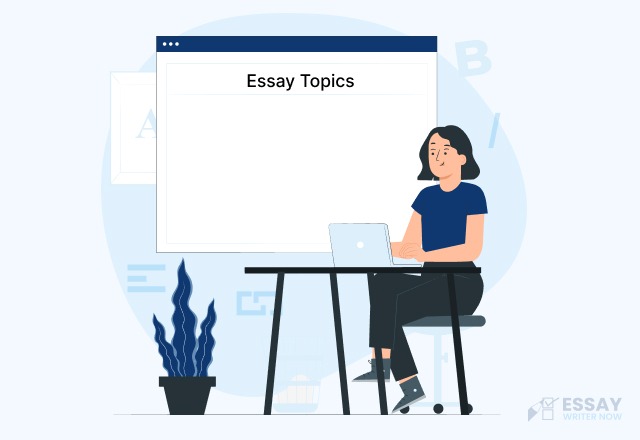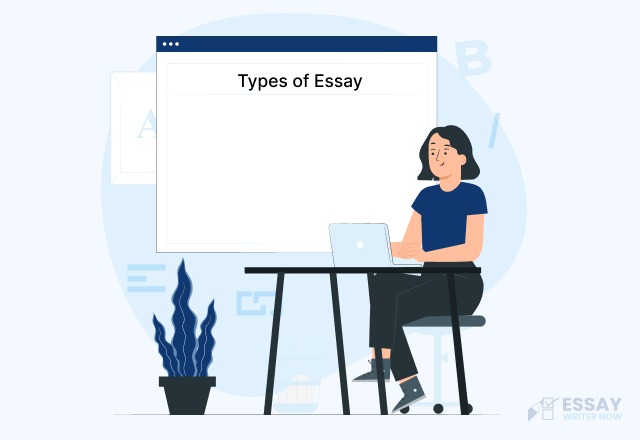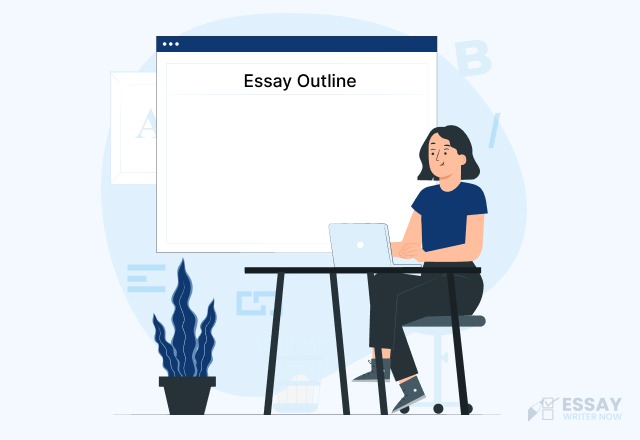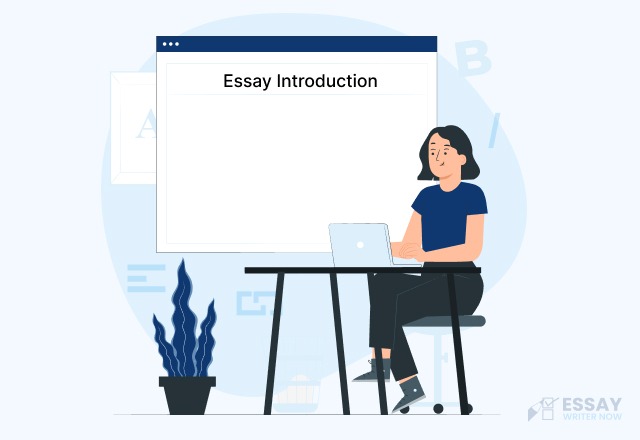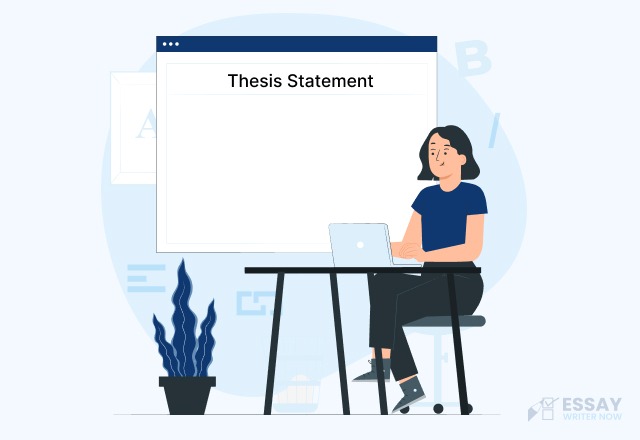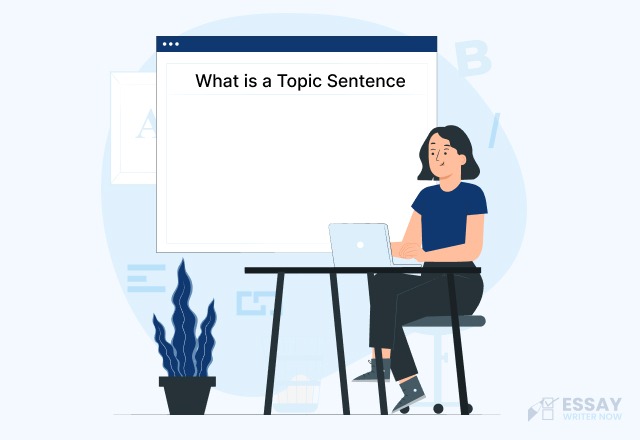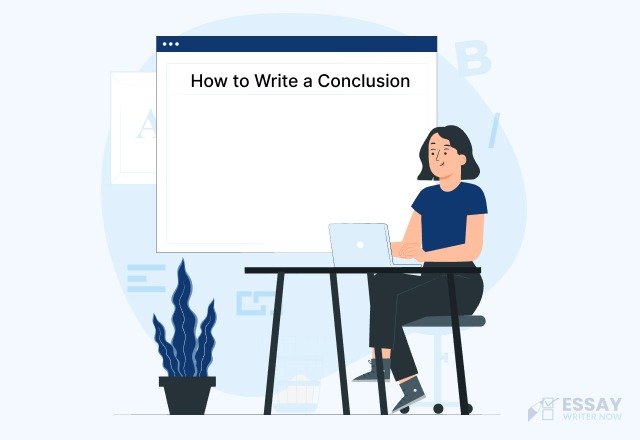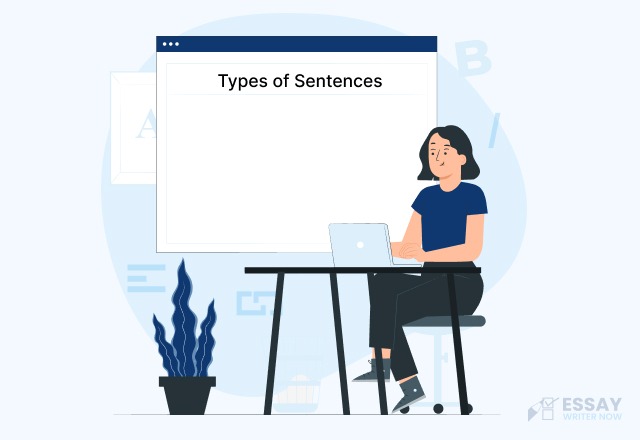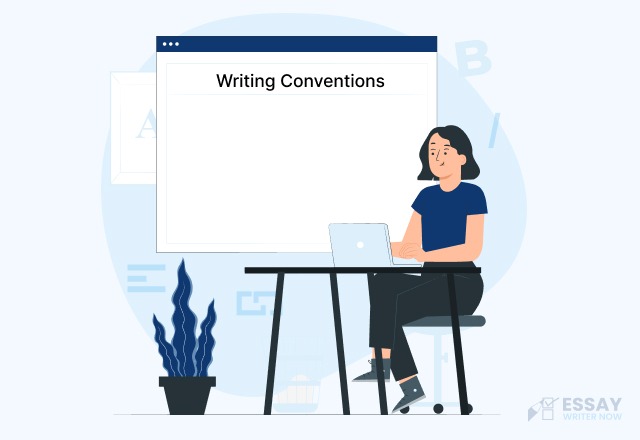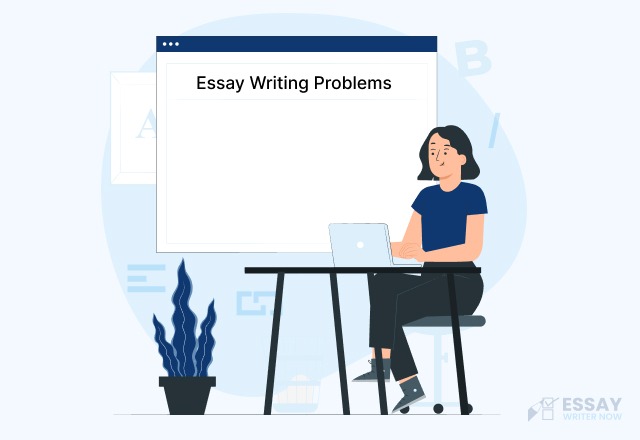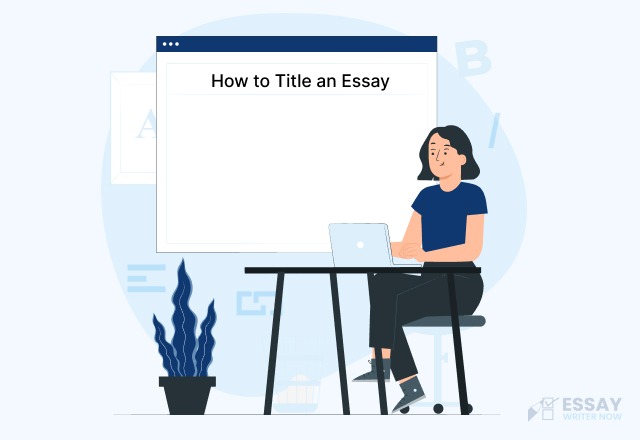What is an Essay?
An essay is a piece of writing that focuses on one subject. It can aim to convince people or explain things. Most commonly, students are assigned 500-word or 1000-word essays. Writing essays helps students develop skills like close reading, analysis, persuasion, and clarity. These skills are crucial for bigger writing assignments in the future.
Stages of Essay Writing
Let’s go over the stages of writing an essay and discuss the steps you need to follow to write a perfect essay:
Stage 1: Prewriting
Here are some steps that can help you get over the prewriting stage:
- Understanding the Requirements of the Assignment
To write a successful essay, you need to thoroughly understand the requirements of the assignment. Here's how:
- Read and Reread the Instructions: Carefully read the assignment guidelines to understand what is expected. This includes knowing the topic, word count, format, and deadline. Sometimes, assignment instructions can be lengthy and detailed, so take your time to absorb all the information.
- Identify the Purpose: Determine if the essay is meant to inform, persuade, analyze, or describe. Knowing the purpose helps in shaping your approach and finalizing the title for your essay. For example, a persuasive essay will have a different tone and structure compared to an informative essay.
- Seek Clarification: If anything is unclear, don’t hesitate to ask your teacher or professor for clarification. This ensures you are on the right track from the start. Teachers appreciate when students seek clarity because it shows engagement and a desire to meet expectations.
- Selecting the Topic
Choosing a topic is a critical step in the essay writing process. Here are some tips:
- Brainstorm Ideas: Take some time to think about various topics. Write down all your ideas without judging them initially. This process helps in generating a pool of potential topics.
- Narrow Down Choices: Evaluate your brainstormed list and narrow it down to a topic that interests you and is likely to engage your readers. A topic you are passionate about will make the writing process more enjoyable and your enthusiasm will show in your writing.
- Check Originality: Ensure your chosen topic is original and not too common. A unique topic will stand out and show your creativity. However, it should still be broad enough to find sufficient research material.
- Consider Scope for Research: Make sure there is enough information available on your topic. A topic with a wide research scope allows you to gather enough evidence to support your arguments.
- Align with Instructor’s Requirements: Make sure your topic meets your instructor’s requirements. Sometimes, instructors have specific guidelines on what topics can be chosen, so it’s important to adhere to these guidelines.
- Conducting Preliminary Research
Once you have chosen a topic, it’s time to conduct preliminary research:
- Use Various Sources: Use books, journals, and reputable websites to gather information. This helps in building a strong foundation of knowledge on your topic.
- Take Notes: While researching, take detailed notes. Highlight important points, quotes, and references that you might use in your essay.
- Identify Key Arguments: Determine the key arguments and evidence that support your thesis. This will help you in structuring your essay effectively.
- Stay Organized: Keep your research materials organized. Use folders or digital tools to keep track of your sources and notes.
- Drafting a Thesis Statement
A thesis statement is the main argument of your essay. Here’s how to draft a strong thesis statement:
- Be Clear and Concise: Create a clear and strong thesis statement that presents your main argument. Avoid vague language and be specific about your stance.
- Make it Debatable: Your thesis should be something that people can disagree with. This makes your essay more interesting and gives you room to argue your point.
- Place it Appropriately: Typically, the thesis statement is placed at the end of the introduction paragraph. This sets the stage for the rest of the essay.
- Revisit and Revise: As you write your essay, you might find that your thesis needs to be refined. Be open to revising your thesis statement to better align with your arguments.
- Forming an Essay Outline
An outline helps in organizing your thoughts and structuring your essay. Here’s how to create one:
- Introduction: Start with a hook to grab the reader’s attention, provide some background information, and end with your thesis statement.
- Body Paragraphs: Each paragraph should begin with a topic sentence that supports the thesis. Include supporting details, examples, and a concluding sentence. Plan out how many paragraphs you need and what each will cover.
- Conclusion: Restate the thesis in different words, summarize the main points from the body paragraphs, and provide future interventions or final thoughts.
- Be Flexible: An outline is a guide, not a strict rule. Be open to making changes as you write and discover new ideas or connections.
Stage 2: Writing the Essay
Here are the steps that will help you write the actual essay
- Introduction
The introduction is the first impression your essay makes on the reader. It should be engaging and informative, setting the stage for your arguments.
Here’s how to craft a strong introduction:
- Start with a Hook:
Begin with an interesting statement to grab the reader’s attention. This could be a quote, a question, a startling fact, or a brief anecdote related to your topic. The goal is to make the reader curious about what you have to say.
Example: "Did you know that the average person spends six months of their life waiting for red lights to turn green?" - Provide Background Information:
Give some context to your topic to help the reader understand what you will be discussing. This should be concise and relevant, providing just enough information to lead into your thesis statement.
Example: "Traffic congestion is a common issue in urban areas, causing delays and increasing pollution. With the rise in the number of vehicles, finding a solution to reduce traffic jams has become more urgent." - End with a Thesis Statement:
Conclude your introduction with a clear and concise thesis statement. This statement presents your main argument and sets the direction for your essay. Make sure it is specific and debatable.
Example: "Implementing smart traffic management systems is essential for reducing congestion and improving urban mobility."
- Body Paragraphs
The body paragraphs are the core of your essay, where you present and support your main arguments. Each paragraph should be well-structured and focused on a single idea.
Here’s how to develop effective body paragraphs:
- Start with a Topic Sentence:
Each paragraph should begin with a topic sentence that introduces the main idea of the paragraph. This sentence should be directly related to your thesis statement and provide a clear indication of what the paragraph will discuss.
Example: "Smart traffic lights can significantly reduce waiting times at intersections." - Include Supporting Details:
After the topic sentence, provide evidence and examples to support your point. This can include facts, statistics, quotes from experts, and real-life examples. Be sure to explain how these details support your argument.
Example: "Studies have shown that smart traffic lights, which adjust their timing based on real-time traffic conditions, can decrease intersection wait times by up to 30%. For instance, the city of Los Angeles has successfully implemented this technology, resulting in smoother traffic flow and reduced commute times for residents." - End with a Concluding Sentence:
Conclude each paragraph with a sentence that summarizes the main point and provides a transition to the next paragraph. This helps maintain the flow of your essay and keeps your arguments connected.
Example: "By optimizing traffic light timings, cities can make significant strides in alleviating traffic congestion and improving overall urban mobility."
- Conclusion
The conclusion is your final opportunity to leave a lasting impression on the reader. It should summarize your main points and restate your thesis in a new light.
Here’s how to write an effective conclusion:
- Restate the Thesis Statement:
Begin your conclusion by restating your thesis statement in different words. This reminds the reader of your main argument and reinforces its importance.
Example: "In conclusion, adopting smart traffic management systems is crucial for addressing the growing issue of urban traffic congestion." - Summarize Main Points:
Briefly summarize the key points you made in the body paragraphs. This helps reinforce your arguments and shows how they support your thesis.
Example: "Smart traffic lights, advanced monitoring technologies, and efficient public transportation are all viable solutions that can lead to smoother traffic flow and shorter commute times." - Provide Future Interventions or Final Thoughts:
End with a call to action, a prediction, or a thought-provoking statement. This leaves the reader with something to ponder and emphasizes the relevance of your essay.
Example: "As cities continue to grow, investing in smart traffic solutions will not only improve the quality of life for residents but also pave the way for a more sustainable and efficient urban future."
Stage 3: Proofreading and Revising
The proofreading and revising stage is crucial to polishing your essay and ensuring it meets the highest standards of quality. This stage can often be as time-consuming as the writing itself, but it is essential for creating a clear, coherent, and error-free essay. Here’s how to effectively proofread and revise your work:
Editing
Here are the steps you need to follow to edit your essay:
- Follow the Outline
Ensure that your essay follows the outline you created during the prewriting stage. This helps maintain a logical flow and ensures that all necessary points are covered.
- Consistency: Check if each section of your essay matches the structure outlined. This includes having a clear essay introduction, well-developed body paragraphs, and a concise conclusion.
- Completeness: Verify that all major points and subpoints are included and thoroughly discussed. Each part of the outline should be fully developed in your essay.
Check Transitions and Connections
Transitions and connections between paragraphs are essential for maintaining the flow of your essay.
- Smooth Transitions: Ensure that each paragraph flows smoothly into the next. Use transitional words and phrases to guide the reader through your arguments.
- Logical Connections: Check if the connections between ideas are clear and logical. Each paragraph should naturally lead to the next, building a cohesive argument.
Topic Sentences and Supporting Details
Each paragraph should start with a strong topic sentence and include relevant supporting details.
- Clear Topic Sentences: Make sure every paragraph begins with a topic sentence that introduces the main idea of the paragraph.
- Relevant Details: Check that the supporting details, such as examples, facts, and quotes, are relevant and strengthen the topic sentence. Avoid including irrelevant information that does not contribute to your argument.
- Proofreading
Here are the steps you need to follow to proofread your essay:
Grammar, Punctuation, and Spelling Mistakes
Carefully proofread your essay for grammatical errors, punctuation mistakes, and spelling issues.
- Grammar: Look for common grammatical errors such as subject-verb agreement, tense consistency, and correct use of pronouns.
- Punctuation: Ensure proper use of punctuation marks, including commas, periods, semicolons, and quotation marks. Incorrect punctuation can change the meaning of a sentence or make it confusing.
- Spelling: Check for spelling mistakes. Even small errors can distract the reader and undermine your credibility.
Remove Repetitive Phrases and Sentences
Repetition can make your essay seem redundant and boring.
- Identify Repetition: Look for phrases, sentences, or ideas that are repeated unnecessarily.
- Simplify: Remove or rephrase repetitive elements to make your essay more concise and engaging by following writing conventions.
Ensure Clarity and Ease of Understanding
Your essay should be easy to follow and understand.
- Clarity: Ensure that each sentence is clear and unambiguous. Avoid using complex words or convoluted sentences that might confuse the reader.
- Coherence: Check that your arguments are logically presented and that each paragraph contributes to your overall thesis.
Leave Your Essay for a Day or Two
Taking a break before revising your essay allows you to view it with fresh eyes.
- Step Away: After finishing your essay, leave it aside for a day or two. This helps you detach from your work and approach it more objectively during revision.
- Fresh Perspective: When you come back to your essay, you will be better able to spot errors and areas for improvement that you might have missed earlier.
Final Tips for Proofreading and Revising
- Read Aloud: Reading your essay aloud can help you catch errors you might not notice when reading silently. It also helps in identifying awkward or unclear sentences.
- Peer Review: If possible, ask a friend or classmate to review your essay. A fresh pair of eyes can provide valuable feedback and catch mistakes you might have overlooked.
- Use Tools: Utilize grammar and spell-check tools, but do not rely solely on them. They can miss errors or suggest incorrect corrections.
Major Types of Essays
Essays come in various forms, each serving a different purpose and requiring a unique approach. Understanding the different types of essays can help you choose the right one for your writing assignment. Here’s a detailed look at the major types of essays:
Descriptive Essay
A descriptive essay aims to paint a vivid picture with words, creating a sensory experience for the reader. The goal is to make the reader feel as if they are experiencing the subject themselves.
- Evocative Language: Use descriptive and figurative language to create a strong image in the reader's mind. This includes using metaphors, similes, and vivid adjectives.
Example: "The golden sunset bathed the landscape in a warm, amber glow, casting long shadows and highlighting the intricate patterns of the cobblestone streets." - Sensory Imagery: Engage the reader's senses by describing how things look, sound, smell, taste, and feel.
Example: "The aroma of freshly baked bread wafted through the air, mingling with the scent of blooming jasmine from the garden."
Descriptive essays often focus on a person, place, object, or event, and aim to convey a deeper meaning or emotional response.
Narrative Essay
A narrative essay tells a story, either from the writer's personal experience or an imaginative account. It follows a clear structure with a beginning, middle, and end, and often focuses on a specific theme or lesson.
- Personal Experiences: Narrative essays often revolve around the writer's personal experiences, allowing for a more intimate and engaging storytelling style.
Example: "When I was ten years old, I embarked on a summer adventure that changed my perspective on life forever." - Emotional Engagement: The aim is to engage the reader emotionally, making them feel connected to the story and its characters.
Example: "As I stood on the edge of the cliff, my heart raced, and my breath caught in my throat. The world below seemed vast and overwhelming, yet I felt a sense of freedom I had never known before."
Narrative essays can also include dialogues, reflections, and insights, adding depth to the story.
Expository Essay
An expository essay seeks to inform, explain, or educate the reader about a specific topic. Expository writing presents factual information, statistics, and evidence without personal opinions or biases.
- Objective Presentation: Expository essays are written in a neutral tone, focusing on presenting facts clearly and logically.
Example: "Photosynthesis is the process by which green plants convert sunlight into chemical energy, producing oxygen as a byproduct." - Structured Format: This type typically follows a structured essay format, including an introduction with a clear thesis statement, body paragraphs that elaborate on the thesis with supporting evidence, and a conclusion that summarizes the main points.
Example: "The process of photosynthesis can be broken down into two main stages: the light-dependent reactions and the Calvin cycle."
Expository essays aim to enhance the reader's understanding of a subject through clear and concise explanations.
Argumentative Essay
An argumentative essay presents a well-reasoned argument on a particular issue, taking a clear stance and supporting it with evidence, logic, and reasoning.
- Clear Stance: The essay should clearly state the writer's position on the issue and provide a strong thesis statement.
Example: "School uniforms should be mandatory in all public schools to promote equality and reduce distractions." - Evidence and Logic: Use credible sources, statistics, and logical reasoning to support your argument and refute opposing viewpoints.
Example: "Research shows that schools with mandatory uniform policies have lower rates of bullying and higher academic performance compared to those without."
Argumentative essays require critical thinking and the ability to construct a cohesive and convincing argument.
Persuasive Essay
A persuasive essay aims to convince the reader to adopt a particular viewpoint or take a specific action. It employs rhetorical devices, emotional appeals, and persuasive language.
- Emotional Appeals: Use emotional language and personal anecdotes to connect with the reader and persuade them to see things from your perspective.
Example: "Imagine a world where every child goes to bed hungry. We have the power to change this reality by supporting local food banks and community programs." - Strong Opinions: Clearly state your opinion and provide compelling reasons and evidence to support it.
Example: "Recycling should be mandatory for all households because it significantly reduces waste, conserves natural resources, and protects the environment."
Persuasive essays often include a call to action, urging the reader to take specific steps in support of the writer's viewpoint.
Analytical Essay
An analytical essay breaks down a complex issue or subject into its constituent parts for in-depth analysis. It examines relationships, patterns, causes, and effects.
- In-depth Analysis: Focus on breaking down the subject into smaller components and examining each part in detail.
Example: "Shakespeare's use of dramatic irony in 'Romeo and Juliet' serves to heighten the tragedy and emphasize the themes of fate and miscommunication." - Critical Evaluation: Analyze the relationships between different elements and draw meaningful conclusions.
Example: "The recurring motif of light and darkness in 'Romeo and Juliet' symbolizes the intense but fleeting nature of the characters' love and the inevitability of their fate."
Analytical essays often involve interpreting texts, evaluating arguments, or examining data to provide a deeper understanding of the subject.
Reflective Essay
A reflective essay explores the writer's personal experiences, thoughts, and insights. It delves into introspection, self-analysis, and reflection on events, relationships, or ideas.
- Personal Growth: Reflective essays often focus on personal growth and lessons learned from specific experiences.
Example: "Volunteering at the local shelter taught me the importance of empathy and the profound impact of small acts of kindness." - Introspective Insights: Share your thoughts and feelings about the experience, providing a window into your inner world.
Example: "Through this experience, I realized that true happiness comes from helping others and making a positive difference in their lives."
Reflective essays offer a unique opportunity to explore your own thoughts and experiences, providing a deeper connection with the reader.
Essential Essay Writing Tips
Writing a compelling essay requires more than just putting words on paper. It involves careful planning, thoughtful organization, and a keen eye for detail. Here are some essential tips to help you craft a standout essay:
1. Choose an Interesting Topic
- Engage Your Audience: Select a topic that not only interests you but will also capture your readers' attention. An engaging topic can make the writing process more enjoyable and your essay more appealing.
Example: Instead of writing about "Technology," narrow it down to "The Impact of Social Media on Teen Mental Health." - Relevance and Scope: Ensure your topic is relevant to the assignment and has enough scope for research and discussion. Avoid overly broad or too narrow topics.
Example: Instead of "Climate Change," consider focusing on "The Effects of Climate Change on Coastal Communities."
2. Keep It Concise
- Word Count: Aim for a word count of 300-500 words for standard essays. This range is typically sufficient to cover the topic without overwhelming the reader.
Example: For a persuasive essay on "Why Recycling Should Be Mandatory," 300-500 words allow for a concise argument without unnecessary details. - Focus on Clarity: Ensure each sentence contributes to your main argument. Avoid filler words and irrelevant information.
Example: Instead of saying, "In my opinion, I think that recycling is important," simply say, "Recycling is important."
3. Use Simple Language
- Clarity Over Complexity: Avoid using complex vocabulary that may confuse readers. Clear and straightforward language makes your essay more accessible.
Example: Instead of "Utilize," use "Use." - Consistency: Maintain a consistent tone and style throughout your essay. This helps in keeping your essay coherent and easy to follow.
Example: If you start with a formal tone, avoid switching to an informal tone midway.
4. Avoid Grammar and Spelling Mistakes
- Proofreading: Carefully proofread your essay to catch any grammar, punctuation, or spelling errors. These mistakes can distract the reader and undermine your credibility.
Example: Use tools like Grammarly or have a peer review your essay to catch mistakes you might have missed. - Read Aloud: Reading your essay aloud can help you identify awkward phrases or errors that you might overlook when reading silently.
Example: Reading aloud can help you spot errors like, "Their going to the store" instead of "They're going to the store."
5. Plan Your Essay
- Outline Creation: Before you start writing, create an essay outline to organize your thoughts and structure your essay. This helps in maintaining a logical flow and ensures you cover all necessary points.
Example: For an argumentative essay, outline your introduction, main arguments, counter arguments, and conclusion. - Brainstorming: Spend time brainstorming ideas and noting down key points you want to include in your essay.
Example: For an essay on "The Benefits of Exercise," brainstorm points like improved mental health, physical fitness, and disease prevention.
6. Use Varied Sentence Structures
- Mix Sentence Types: Vary your sentence structures to keep your essay interesting and engaging. Use a mix of short, medium, and long sentences.
Example: "Exercise is beneficial for many reasons. It improves mental health by reducing anxiety and depression. Furthermore, it enhances physical fitness and helps prevent chronic diseases." - Transitions: Use transition words and phrases to connect your ideas and ensure a smooth flow between sentences and paragraphs.
Example: Use words like "However," "Moreover," "Therefore," and "In addition" to link your points logically.
Essay Writing Examples
Here are a few examples of writing an essay to help you understand better.
Essay Writing Topic Ideas
Here are some topics for essay writing that you may consider for writing your next essay:
- Should Facebook be banned?
- Reasons why smoking is not allowed in public places.
- Draw a comparison between PC and MAC.
- Explain the merits and demerits of dieting.
- Write about the effects of earthquakes.
- Write about the pros and cons of globalization.
- Pros and cons of monarchy.
- Are people transforming into technological zombies?
- Explain the effect of cross-cultural marriages on racial tolerance.
- Online dating - Safe or not?
In conclusion, essay writing is a valuable skill that helps students think critically and communicate effectively. By applying the steps and techniques discussed in this guide, you'll enhance your ability to think critically, articulate ideas clearly, and engage readers effectively.
Remember to choose a topic that interests you, keep your language simple, and plan your essay carefully. By focusing on clear structure, varied sentence patterns, and careful editing, you can write compelling essays that engage and inform your readers.

